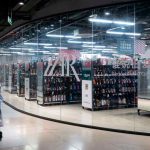THOMAS SAMSON/AFP via Getty Images
- Amazon employs one-third of all US warehouse workers, but accounts for half the injuries, a new report shows.
- Lowering Amazon’s injury rate is a key part of labor activists’ union organizing campaigns.
- Amazon says it spent $300 million on safety last year, part of its pledge to become “Earth’s Safest Place to Work.”
In the year since Amazon pledged to become “Earth’s Safest Place to Work,” the serious injury rate at the company’s American warehouses rose 15%, according to a new report from the union coalition Strategic Organizing Center.
The report, which was published Tuesday and relies on federal injury data, shows that the average Amazon worker was more likely to get hurt in 2021 than they were in 2020. This comes as the company said it spent $300 million on worker safety and instituted a slate of new programs it claims are designed to reduce injuries.
Despite these initiatives, Amazon employees tend to suffer nearly double the injury rates as those at non-Amazon warehouses, according to the federal data. They also account for an outsized number of worker injuries across the US. In 2021, Amazon was responsible for a full half of the US warehouse industry’s reported injuries while making up only a third of its workers, according to the report.
Serious injury rates were also nearly 30% higher at Amazon’s newer automated warehouses, where workers keep pace with robots that rarely slow down or stop, than at its facilities without robots, the report found. Amazon expects workers in robotic facilities to perform as many as four times the number of repetitive motions per hour as their counterparts in non-robotic facilities, The New York Times previously reported.
An Amazon spokesperson did not immediately respond to a request for comment.
Labor activists in the United States have made Amazon’s high injury rate a cornerstone of union organizing campaigns at the company, often pointing to the speed of work at its warehouses. The Amazon Labor Union, which earlier this month won the first union election at an Amazon warehouse in the retail giant’s 27-year history, has said Amazon needs to allow injured workers more time off to recover.
The company pushes workers too hard to meet metrics, which leads to injuries, Amazon Labor Union cofounder Chris Smalls previously told Insider. “You have to overkill your workers in some cases,” Smalls said.
The report’s findings also add weight to regulatory consensus that Amazon’s pace of work is behind the company’s high injury rates.
Washington state’s workplace safety agency has said there is a “direct connection” between Amazon’s “very high pace of work” and high rates of repetitive stress injuries like strains, sprains, and hernias among the company’s warehouse workers. When safety inspectors tried to calculate the risk of injury at one Washington state warehouse, they found workers were moving so quickly that “it broke the model,” Insider previously reported.
In 2021, former CEO Jeff Bezos set to reduce warehouse injury rates in a campaign to become "Earth's Safest Place to Work." Amazon has also said it plans to halve its warehouse injury rates by 2025. Still, it has rebuffed regulators' conclusion that it cannot meaningfully reduce injuries without allowing warehouse employees to work more slowly. The company has also denied in previous reports by Reveal that its injury rate has increased.
"Safety and performance targets can go hand in hand," Amazon's workplace safety chief Heather MacDougall told reporters during a news conference last year.
In four violations over the past year, Washington state's workplace safety regulator has instructed Amazon to lower the pace of work at its warehouses. The company is appealing all four citations.
Do you work at Amazon? Got a tip? Contact reporter Katherine Long via the encrypted messaging app Signal (+1-206-375-9280) or email (klong@insider.com).
Powered by WPeMatico






